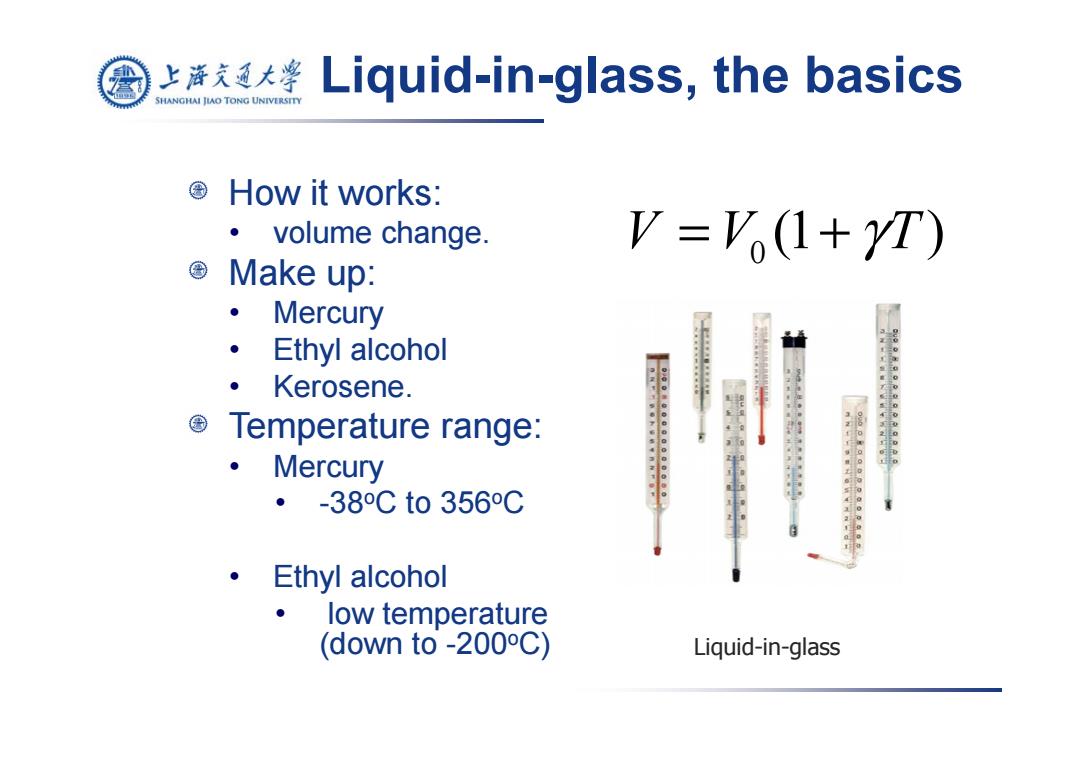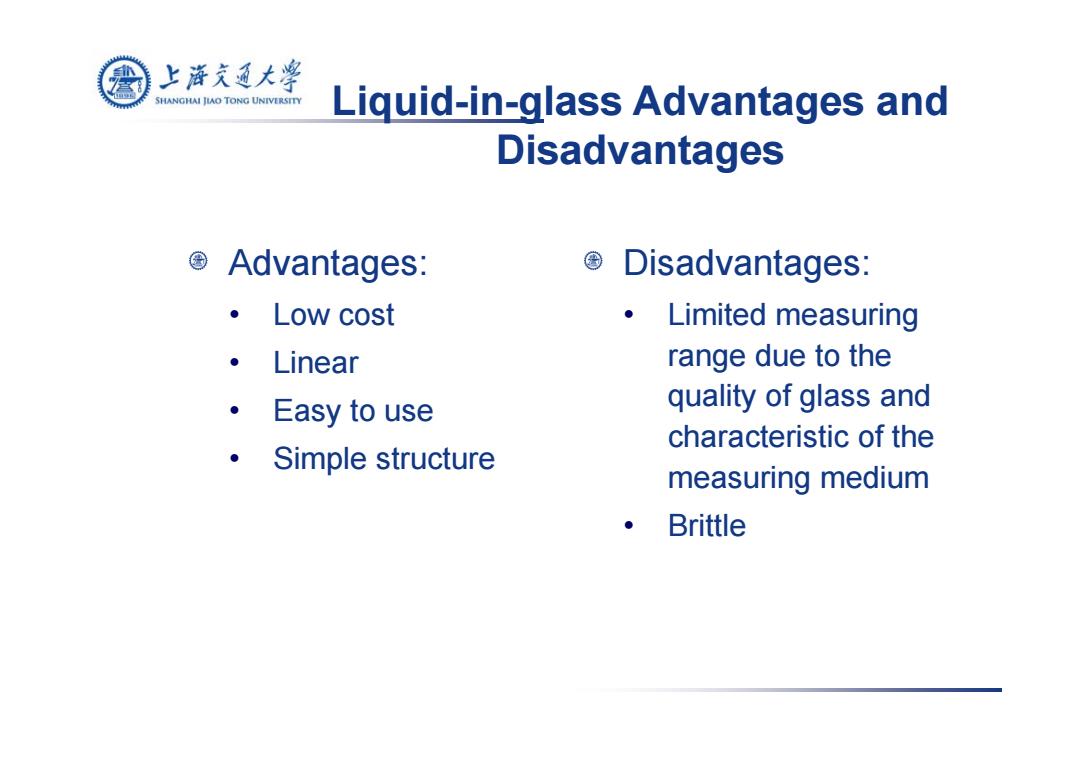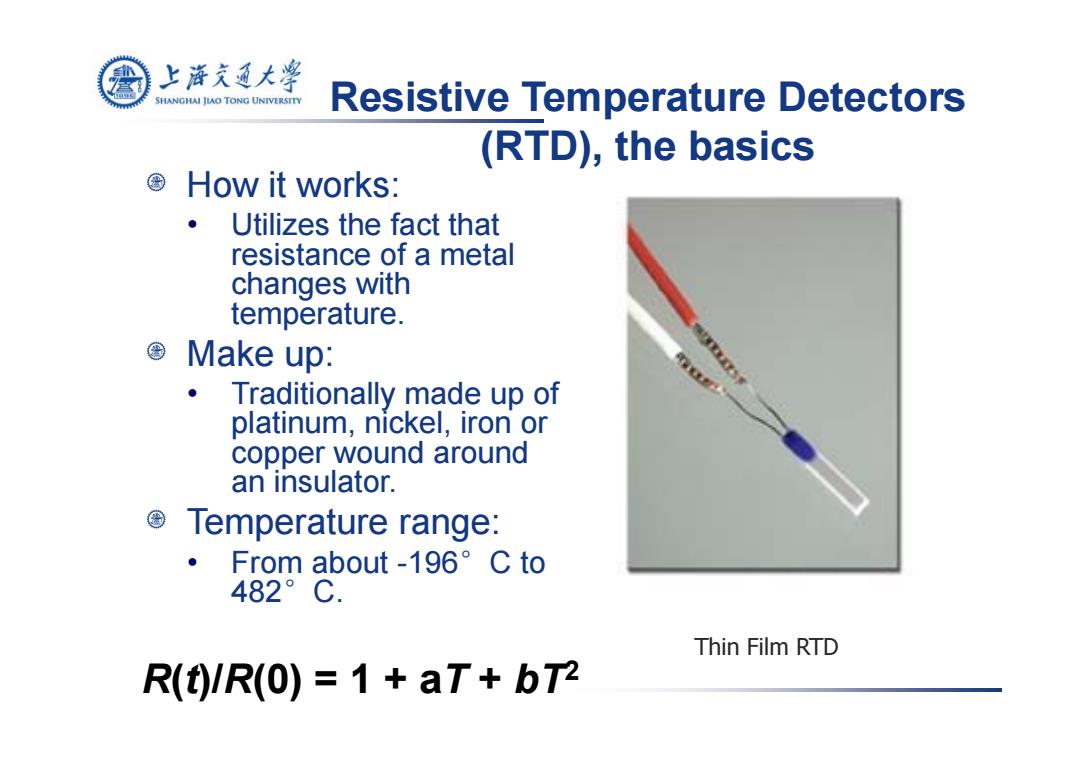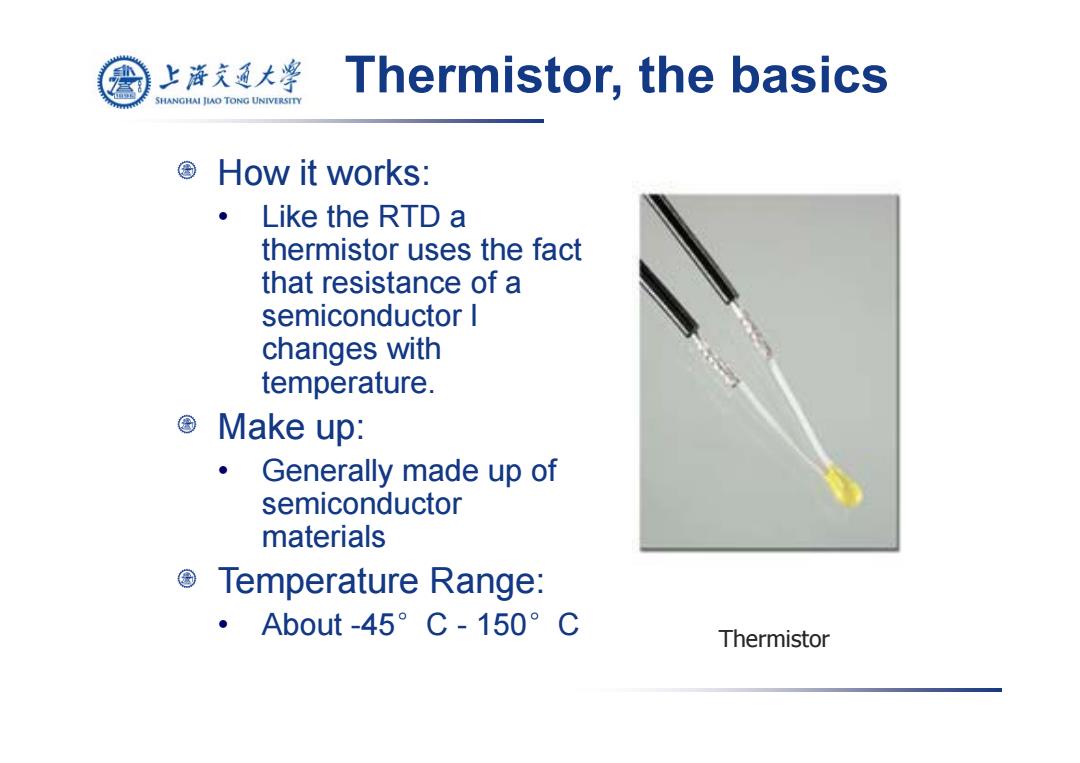
上海充通大学 Liquid-in-glass,the basics SHANGHAI JIAO TONG UNIVERSITY ©How it works: volume change. V=V(1+Y1) © Make up: Mercury ·Ethyl alcohol ·Kerosene. Temperature range: 。 56765422 Mercury ·-38Cto356C Ethyl alcohol ● low temperature (down to-200C) Liquid-in-glass
Liquid-in-glass, the basics How it works: • volume change. Make up: • Mercury • Ethyl alcohol • Kerosene. Temperature range: • Mercury • -38 oC to 356 oC • Ethyl alcohol • low temperature (down to -200 oC) Liquid-in-glass 0 VV T = + (1 ) γ

上游充通大¥ SHANGHAI JIAO TONG UNIVERSITY Liquid-in-glass Advantages and Disadvantages 图Advantages: 国 Disadvantages: ·Low cost 。Limited measuring 。Linear range due to the ·Easy to use quality of glass and characteristic of the 。Simple structure measuring medium Brittle
Liquid-in-glass Advantages and Disadvantages Advantages: • Low cost • Linear • Easy to use • Simple structure Disadvantages: • Limited measuring range due to the quality of glass and characteristic of the measuring medium • Brittle

上游充通大粤 SHANGHAI JIAO TONG UNIVERSITY Resistive Temperature Detectors (RTD),the basics ©How it works: 0 Utilizes the fact that resistance of a metal changes with temperature. 国 Make up: Traditionally made up of platinum,nickel,iron or copper wound around an insulator. Temperature range: From about-196°Cto 482°C. Thin Film RTD R(t)/R(0)=1+aT+bT2
Resistive Temperature Detectors (RTD), the basics How it works: • Utilizes the fact that resistance of a metal changes with temperature. Make up: • Traditionally made up of platinum, nickel, iron or copper wound around an insulator. Temperature range: • From about -196 °C to 482 °C. Thin Film RTD R ( t)/ R(0) = 1 + a T + bT2

上游充通大粤 SHANGHAI JIAO TONG UNIVERSITY RTD Advantages and Disadvantages Advantages: ©Disadvantages: 。Stable ·Expensive ·Very accurate Current source Change in required resistance is linear Small change in resistance 。Self heating Less rugged than thermocouples
RTD Advantages and Disadvantages Advantages: • Stable • Very accurate • Change in resistance is linear Disadvantages: • Expensive • Current source required • Small change in resistance • Self heating • Less rugged than thermocouples

上游充通大学 Thermistor,the basics SHANGHAI JIAO TONG UNIVERSITY ©How it works: ·Like the RTD a thermistor uses the fact that resistance of a semiconductor I changes with temperature. ©Make up: e Generally made up of semiconductor materials Temperature Range: ·Ab0ut-45°C-150°C Thermistor
Thermistor, the basics How it works: • Like the RTD a thermistor uses the fact that resistance of a semiconductor l changes with temperature. Make up: • Generally made up of semiconductor materials Temperature Range: • About -45 °C - 150 ° C Thermistor